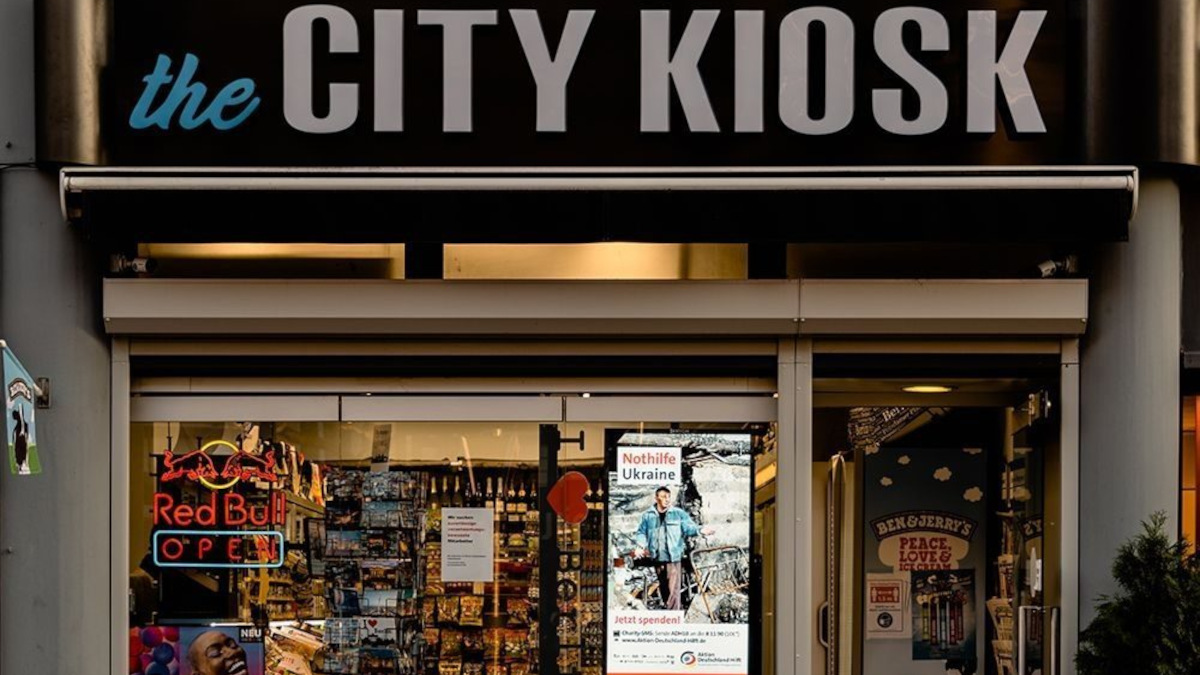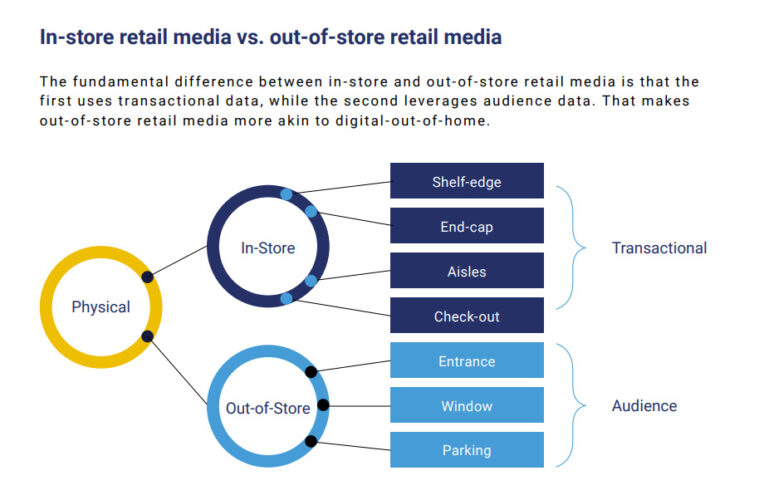Retailers, like the British Coop chain, have started to explore shop windows for "front-of-store" DooH networks. These networks show where DooH fundamentally differs from retail media.

invidis Background: Retail Media Is Not DooH
The British supermarket chain Coop has just announced plans to roll out shop window screens in addition to its in-store retail media displays. Given that Coop already operates one of the largest retail media networks in the UK, it’s no surprise the company is now looking to monetize its shop windows – especially since these windows face some of the busiest areas in British cities.
While Coop has the resources – and its own retail media subsidiary – to manage this on its own, there are thousands of smaller stores with valuable shop windows that may not have the same means but would still welcome the additional revenue from advertising.
A German company that has made this interest its business model is Berlin-based Hygh. The company has cranked out a digital-out-of-home network of 3,700 shop window screens across Germany’s 15 largest cities. Hygh claims it is currently expanding at a rate of 50 stores per week. With screens that cover less than the pivotal one square meter, Hygh is able to bypass Germany’s strict DooH regulations.
Front-of-store DooH is gaining popularity among both out-of-home (OoH) advertisers and retailers. Like retail media – which includes in-store ad screens – this type of advertising takes advantage of high foot traffic near the point of sale. However, unlike in-store retail media, front-of-store DooH targets passers-by rather than the store’s customers. Since it doesn’t directly influence buyers at the moment of purchase, it functions more as an audience-based advertising medium.
What makes Retail Media so valuable?
The term is on the lips of every industry professional, so we wrote up an entire Retail Media 101 to explain what the hype is all about. You can find it in our Yearbook 2024, starting on page 114. Download the edition for FREE!

This is a key difference between in-store retail media and DooH displays: they are transaction-based instead of audience-based. With in-store campaigns, brands can directly measure their Return on Ad Spend (ROAS) using the retailer’s checkout data and tracking tools. This works especially for product ads of brands that are sold in the store: If the campaign performs, product sales will increase.
DooH networks, in turn, cannot provide this level of attribution and measurement; they can only sell by the number of impressions. The same goes for fron-of-store and out-of-store retail media, which include screens at the store entrance, in shop windows and in parking spaces. These are usually treated like DooH screens and are audience-based.
From real-time checkout data, we also know that the impact of retail media campaigns can be significant: The Retail Practice Department of McKinsey, for instance, speaks of an average sales lift of 20 to 30 percent and an improvement in customer engagement of 15 to 30 percent.
The appeal of shop windows is a different one: they are a relatively unexploited location for out-of-home advertising, often located in prime spots – like the 300 supermarkets Coop has chosen for its new network.
